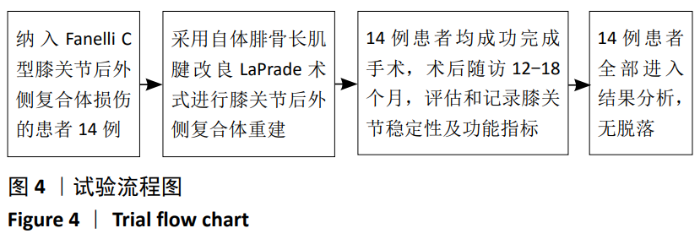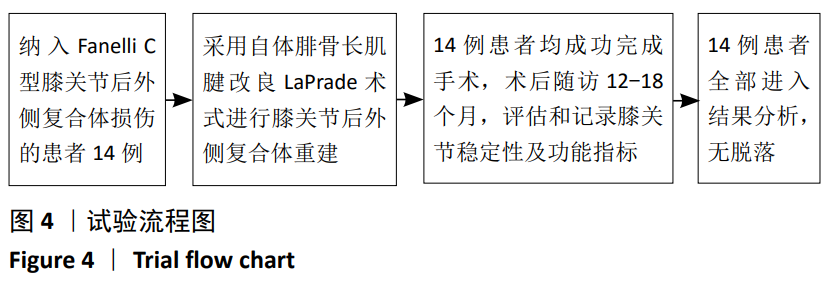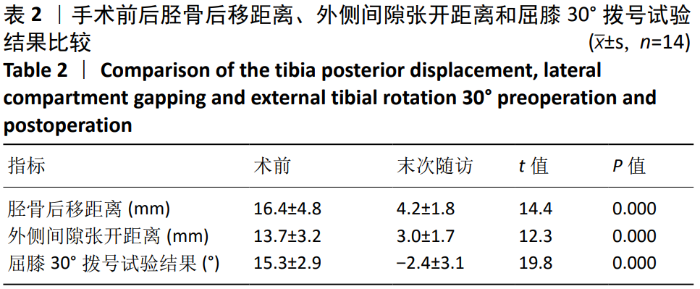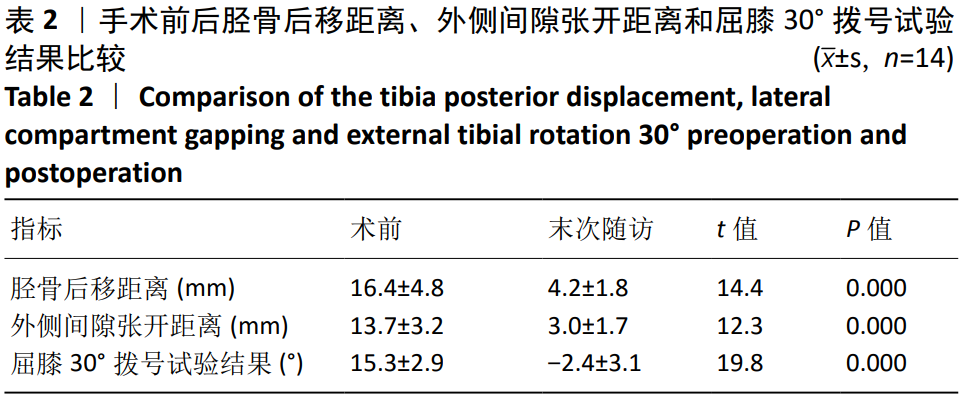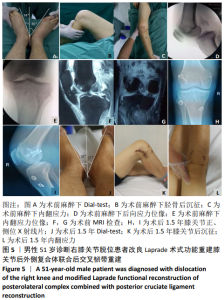[1] 刘心,冯华,张辉.膝关节后外侧结构损伤的临床研究进展[J].中国运动医学杂志,2009,28(3):331-334.
[2] 冯华,张辉.后交叉韧带与后外复合体损伤[M].北京:人民卫生出版社,2016:15-16.
[3] LEE J, PAPAKONSTANTINOU O, BROOKENTHAL KR, et al. Arcuate sign of posterolateral knees injuries:anaytomic,radiographic,and MR imaging data related to patterns of injury. Skeletal Radiol. 2003;32(11):619-627.
[4] 张建林,栾彦军,郭龙,等. 自体肌腱移植修复前交叉韧带合并后外侧角损伤[J].中国组织工程研究与临床康复,2011,15(53): 10060-10063.
[5] DJIAN P. Posterolateral knee reconstruction. Orthop Traumatol Surg Res. 2015; S159–S170.
[6] SEEBACHER JR,INGLIS AE,MARSHALL JL,et al. The structure of the poeterolateral aspect of the knee. J bone Joint Surg(Am). 1982;64(4): 536-541.
[7] 刘晓敏,刘杰,吕劲. 膝关节后外侧结构生物力学的有限元分析[J]. 中国组织工程研究,2012,16(39):7259-7262.
[8] FANELLI GC, FELDMANN DD. Managemmet of combined ACL/PCL posterolateral complex injuries of the knee. Oper Tech Sports Med. 1999;7:143-149.
[9] SHAHANE SA, IBBOTSON C, STRACHAN R, et al. The popliteofibular ligament. An anatomical study of the posterolateral corner of the knee. J Bone Joint Surg Br. 1999;81(4):636-642.
[10] SUGITA T, AMIS AA. Anatomic and biomechanical study of the lateral collateral and popliteofibular ligaments. Am J Sports Med. 2001;29(4): 466-472.
[11] MCGUIRE DA, WOLCHOK JC. Posterolateral corner reconstruction. Arthroscopy.2003;19(7):790-793.
[12] ALBRIGHT JP, BROWN AW. Management of chronic posterolateral rotatory instability of the knee: surgical technique for the posterolateral corner sling procedure. Instr Course Lect.1998;47:369-378.
[13] FENG H, HONG L, GENG XS, et al. Posterolateral sling recon-struction of the popliteus tendon: an all-arthroscopic technique. Arthroscopy. 2009;25(7):800-805.
[14] HO EP, LAM MH, CHUNG MM, et al. Compar-ison of 2 surgical techniques for reconstructing posterolateral corner ofthe knee: a cadaveric study evaluated by navigation system. Arthroscopy. 2011; 27(1):89-96.
[15] LAPRADE RF, JOHANSEN S, ENGEBRETSEN L. Outcomes of an anatomic posterolateral knee reconstruction: surgical technique. J Bone Joint Surg Am. 2011;93(1):10-20.
[16] PASQUE C, NOYES FR, GIBBONS M, et al. The role of the popliteofibular ligament and the tendon of popliteus in providing stability in the human knee. J Bone Joint Surg Br. 2003;85(2):292-298.
[17] LEE MC, PARK YK, LEE SH, et al. Posterolateral reconstruction using split Achilles tendon allograft. Arthroscopy. 2003;19(9):1043-1049.
[18] LAPRADE RF, LY TV, WENTORF FA,et al. The posterolateral attachments of the knee:a qualitative and quantitative morphologic analysis of the fibular collateral ligament,popliteus tendon,popliteofibular ligament, and lateral gastrocnemius tendon. Am J Sprots Med. 2003;31(6): 854-860.
[19] 赵金忠.膝关节重建外科学[M].郑州:河南科学技术出版社,2015: 164-166.
[20] 赵章伟,张力成,杨国敬,等.膝关节后外侧角股骨止点的X线测量与分析[J]. 中华创伤骨科杂志,2011,13(7):657-660. |
